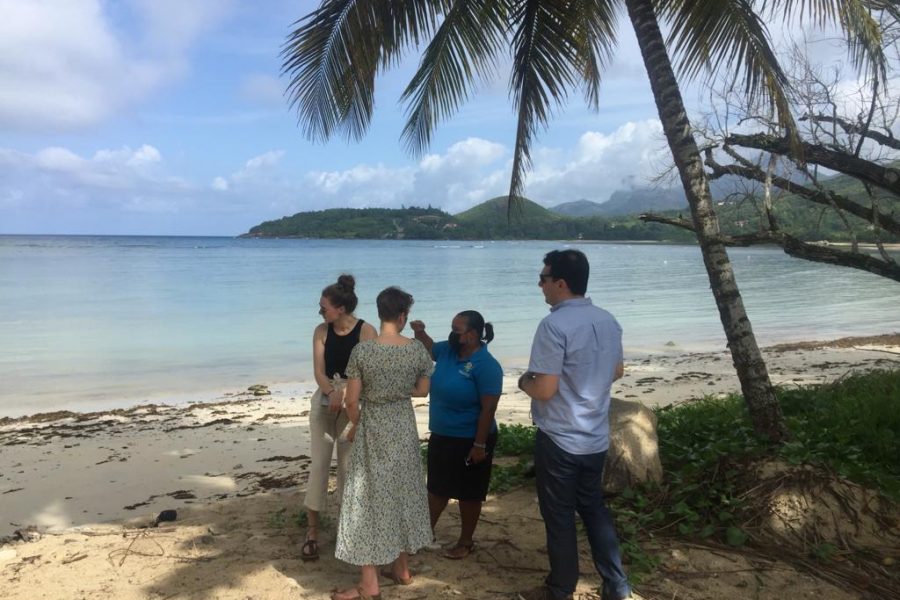
Sustainability Cafe: Episode 4
15 April 2023
Summary and video of the conference ‘Tackling the twin energy and climate crises’ with Fatih Birol – April 5
20 April 2023Author: Clara Bartram Gurresø
There is a wide consensus within climate justice that the most vulnerable must receive support for adaptation. In line with this, the Paris Agreement stipulates that adaptation finance should prioritise “particularly vulnerable” Parties, including Small Island Developing States (SIDS) and Least Developed Countries (LDCs). The focus on vulnerable countries neglects that climate change may impact communities differently at the subnational level. It is important to pay attention to the local level because adaptation mainly benefits the localities in which they are implemented. If we are serious about prioritising the most vulnerable, then it is not sufficient to provide finance to SIDS and LDCs, we must also ensure that it reaches the most vulnerable within those countries – what Sam Barrett (2013) refers to as multiscalar climate justice.
To assess whether adaptation finance reaches the most vulnerable people and communities, studies have examined allocation at the subnational level in recipient countries. Most subnational allocation studies focus on LDCs, while SIDS are overlooked in the literature. SIDS have unique social, economic, political and physical characteristics that set them apart from other countries, including LDCs, and shapes both their vulnerability and general resource allocation. SIDS are low-lying coastal nations that consist mostly or entirely of coastal zones, making them highly vulnerable to changes in sea-levels and sea-surface temperatures. They have small populations, varying from 1,620 in Niue to 11.3 million in Cuba. Although some SIDS have a high GDP per capita, their overall economies are small and vulnerable to external shocks, which makes it difficult for them to recover from the impacts of severe weather events. Dominica is a stark example of this: in 2015, Storm Erica left damages equivalent to 90% of the country’s national GDP, and only two years later, in 2017, Hurricane Maria hit and caused damages for 224% of GDP. Due to their low contribution to global emissions and their high vulnerability to climate change, adaptation is a key priority for SIDS.
In addition to shaping their vulnerability to climate change, the smallness of SIDS also influences the structure of their societies and general resource distribution. That is the argument by Baldacchino and Veenendaal (2018), who identify four central themes that characterise island societies: monopoly, intimacy, totality and emigration (coined the MITE syndrome). In short, they argue that in small island societies, power tends to be concentrated in the hands of a few individuals or institutions. There is a lack of political anonymity, and supporters of the ruling party have better access to the political elite and state resources. Finally, citizens and politicians are close to each other and people often interact in overlapping (private and professional) role relationships. The only option for inhabitants who cannot tolerate these traits is to emigrate. Due to these unique traits, findings from subnational allocation studies in LDCs cannot necessarily be generalised to SIDS.
SIDS are considered to be among the most vulnerable countries to climate change, and it is therefore widely agreed that they should be priority recipients for international adaptation finance. A multiscalar approach to climate justice requires that the finance also reaches the most vulnerable groups within SIDS, but there is a lack of evidence on whether this indeed happens. Drawing on concepts from island and small states studies could offer a new and valuable contribution to the literature on climate justice and adaptation finance allocation. That is one of the objectives of project adjust, an inter-disciplinary research group based at Kiel University. Through a study of allocation procedures and criteria in Seychelles, we examine what drives subnational allocation of adaptation finance in SIDS and the role that vulnerability plays in decision-making.
Adaptation finance in Seychelles comes from a variety of sources, including domestic budgets, multilateral funds and blended finance. The Ministry of Agriculture, Climate Change and Environment (MACCE) plays an important role in allocation of both domestic and multilateral funding. Some informants expressed the view that MACCE prioritises projects that relate to their own objectives (ie. explicitly environmental) while projects in other sectors such as health are neglected. Preliminary results further suggest that national adaptation finance actors in Seychelles have inconsistent perceptions of who constitutes particularly vulnerable groups, and even if there are subgroups who are more vulnerable than the rest of the population.
The national government prioritises adaptation projects that protect critical infrastructure and benefit the greatest number of people. Critical infrastructure consists of eg. the Victoria harbour, airport, hospitals and roads, most of which are located near the coast and therefore vulnerable to rising sea-levels and coastal erosion. Informants often rationalised this prioritisation based on the argument that critical infrastructure is vital for the national economy: the Victoria harbour is a central point for all export and import, and the airport is vital for international travel and tourism. Protecting the economy was not considered at odds with protecting the most vulnerable; on the contrary it was regarded as a means of protecting the whole population including the most vulnerable. This argument broaches complex questions of who benefit from economic activities, which require careful unpacking. Importantly, it must be considered in the context of Seychelles’ fragile economy, which, as many other SIDS, rests almost entirely on fishing and tourism.
The findings outlined here require further analysis, but suggest that vulnerability plays a complex role in the subnational allocation of adaptation finance in SIDS. Moreover, research is needed to understand perceptions of vulnerability in the light of SIDS’ unique characteristics.
More information about project adjust is available on our website.
References
Baldacchino, G., & Veenendaal, W. (2018). Society and Community. In The Routledge International Handbook of Island Studies (pp. 339–352).
Barrett, S. (2013). The Necessity of a Multiscalar Analysis of Climate Justice. Progress in Human Geography, 37(2), 215–233. https://doi.org/10.1177/0309132512448270


